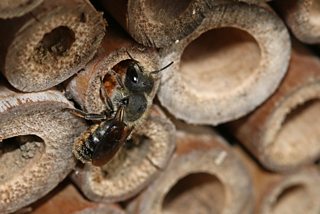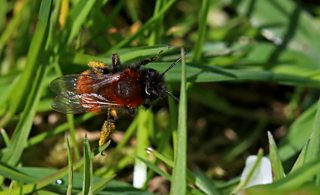My dad often tells the story that, when I was little, he’d come to my room hours after the light should have gone off to find me herding spiders on my bed. I remember gathering spiders but I couldn’t tell you what species they were; I knew their names – Boris, Jill, Simon, David and so on – but, to me, they were all just spiders. The concept of there being different species of spider was alien. In fact, for many years I was content to just admire the natural world; with a few exceptions (mostly birds), I had no desire to know ‘what’ things were – spiders were spiders, bees were bees and wasps were the enemy.
Then, many years later, I started working for Worcestershire Wildlife Trust as their Communications Manager and, with the guidance of a few key people, a whole new world opened up. I was a bit more savvy than my five year old self – by then I knew that not all spiders were the same! But rather than spiders being the thing that really fired my enthusiasm, I discovered the world of bees.

I think I’ve always harboured a desire to hug a bumblebee (who hasn’t) so perhaps it’s really no surprise that I’ve spent the last few years getting to know the bee family and their relatives, the wasps (they’re just as fascinating and are definitely not the enemy). But until just a handful of years ago I had no idea that solitary bees even existed. Where had I been? I’ve always loved wildlife – how could I have overlooked these fascinating creatures?
So just what happened? Well, it was a combination of a few things. In part, my job meant that I was looking at wildlife in a different way – I wasn’t just enjoying nature as I walked through it, I’d begun to take notice of just how fascinating it all was. In part, I realised that if I was able to correctly name the species in my photos, the Trust would be able to make use of them (I swear I’ve had a camera in my hand since the day I was born). But the thing that really brought it all together, and something that I’d not really had before, was that I found myself in the company of people who were really enthusiastic, knowledgeable and inspirational about our natural world.
And so it was that I started to spend hours searching the internet trying to identify the creatures that I was taking photos of. I bought books, I relentlessly badgered my local county bee recorder, I talked to other people, I booked myself onto courses run by the Trust and others, I joined Worcestershire Recorders, BWARS (the Bees, Wasps & Ants Recording Society) and Bumblebee Conservation; in short, I couldn’t get enough. Doing all of this on my own would have only taken me so far - with the additional help of some wonderful people, my knowledge has really grown.

To help with my quest, I’ve done my best to make my garden an oasis for our winged friends. I live in rented accommodation and space is limited but I’ve done my best to ensure that, in ‘my’ patch, nectar-rich plants are in flower for as much of the year as possible – from snowdrops and hellebores to Michaelmas daisies and sedums. I discovered the existence of hairy-footed flower bees (Anthophora plumipes) in the Trust’s wildlife garden and was determined to attract them at home – so I planted lungwort and, hey presto, the following spring I saw my garden’s first hairy-footed flower bees.
It took a couple of years before my first bee hotel was used but last year, almost every hole was occupied by red mason bees (Osmia bicornis) and patchwork leaf-cutter bees (Megachile centuncularis). I spent ages watching a leaf-cutter – she was bringing back a variety of leaves and petals that she’d been cutting to line her egg-cells and I was determined to find where she was taking them from. I searched the garden and couldn’t find the tell-tale semicircles cut from leaves so I decided to try to follow her flight. Take my advice – unless you have incredibly keen eyesight and lots of time, don’t even attempt this!
I only manage a small part of the garden at home but by creating an attractive small patch, it looks like bees are finding the wider garden. Until this year, I’d only seen six or seven species of bee there but just a few weeks ago, I found several more on the blossom at the bottom of the garden. I spent quite a while watching the goings-on and spotted a common carder bee (Bombus pascuorum) alternately looking for a suitable nest-site in the tussocky grass at the bottom of the trees and feeding on the red dead nettle there. Nearby I spotted the garden’s first tawny mining bee (Andrena fulva) as well as, another garden first, two mining bee nests in the shorter grass nearby with orange-tail mining bee (Andrena haemorrhoa) faces poking out.

I am thoroughly enjoying this journey of exploration that I appear to have found myself on. Yes, sometimes I get odd looks from people when I’m peering into a flower or shrub in my local park or in a garden that I’m visiting with friends and family. But I’ve had some great conversations with bemused passers-by when I’ve been sat by a hole waiting for the occupant to emerge; I chatted for ages to a couple last year who had no idea about the world of solitary wasps. I know many people who started this journey at a much earlier age but it really doesn’t matter when you get the buzz for wildlife, it’s never too late to learn – and it’s never too late to help!
If you’d like to know more about how you can help bees (and wasps) in your garden, take a look at and download the wild bee action pack. For more information about the work of Worcestershire Wildlife Trust, including how we’re working with local farmers to improve their land for pollinators and beneficial insects, visit
The 成人论坛 is not responsible for the content of external websites.
